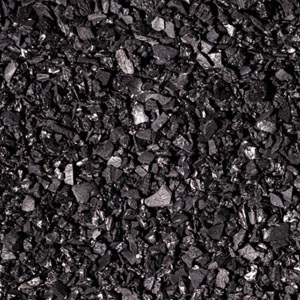Granular Activated Carbon Types
Granular activated carbon (GAC) is a highly versatile adsorbent that plays a crucial role in numerous industrial and environmental applications, thanks to its intricate porous structure and extensive surface area. Its classification is diverse, with types distinguished by raw materials, pore size distribution, and the specific purposes they serve.
Coal-based GAC is a prominent type, sourced from bituminous or lignite coal through a series of activation processes. What sets it apart is its remarkable hardness, which enables it to withstand rigorous handling and prolonged use without significant degradation. The macroporous structure of coal-based GAC is particularly well-developed, with pores that can effectively capture large organic molecules. In water treatment, this makes it a go-to option for eliminating pesticides, which often have complex and large molecular structures, as well as industrial solvents that may be present in contaminated water. Its cost-effectiveness is another key advantage, making it a staple in municipal water purification plants. For example, many cities rely on coal-based GAC in their filtration systems to ensure the water supplied to households is free from harmful large organic pollutants.
Wood-based GAC is another widely used variety, crafted from hardwoods such as oak, as well as coconut shells. Among these, coconut shell-based GAC deserves special mention. It features a predominantly microporous structure, where the tiny pores are perfectly suited for adsorbing small molecules. This includes chlorine, which is commonly added to water supplies but can affect taste and odor, volatile organic compounds (VOCs) that may be released from various industrial processes, and other substances that cause unpleasant tastes and smells in water or air. This characteristic makes coconut shell-based GAC a top choice for residential water filters, where homeowners seek to improve the quality of their drinking water. It also finds extensive use in air purification systems, helping to remove harmful small molecules from the air in homes, offices, and other enclosed spaces.
In conclusion, the wide range of granular activated carbon types, each with its unique set of properties, provides tailored solutions for a vast array of purification challenges. By leveraging their distinct structural and material characteristics, these types of GAC continue to be indispensable in maintaining clean water, air, and ensuring the quality of various products across industries.

Choosing the right GAC depends on the application. Coconut shell GAC is great for water filters, while coal-based GAC is cost-effective for industrial use. As environmental regulations tighten, GAC’s role in pollution control will keep growing.
Post time: Aug-14-2025

